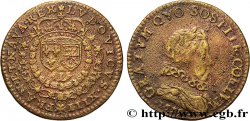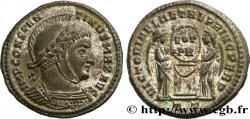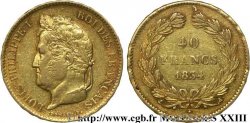fjt_128614 - LOUIS XIII THE JUST Jeton Ar 27 1633
Not available.
Item sold on our e-shop
Price : 280.00 €
Item sold on our e-shop
Price : 280.00 €
Type : Jeton Ar 27
Date: 1633
Metal : silver
Diameter : 27 mm
Orientation dies : 6 h.
Weight : 5,45 g.
Rarity : R1
Catalogue references :
Obverse
Obverse legend : .CAESARI. QVAE. CAESARIS. ; EN DOUBLE LÉGENDE : LVD. XIII. FRAN. ET. NAVAR. REX ; À L'EXERGUE : .1633..
Obverse description : Buste à droite de Louis XIII dans un double cercle dont l'un perlé, type Guéant Prieur 106A.
Obverse translation : Rendez à César ce qui est à César.
Reverse
Reverse legend : OBSEQVIO. FIRMATA QVIES. ; À L'EXERGUE : .1633..
Reverse description : Un ange debout, appuyé sur la croix, tenant un livre de la main gauche et foulant un squelette.
Reverse translation : Un repos confirmé par la mort.
Commentary
Ce jeton est d’autant plus important que le carré de droit semble reproduire un coin de droit de denier tournois : la légende “Rendez à César ce qui est à César” aurait-elle conduit à représenter une monnaie, choisie suffisamment petite pour s’intégrer dans le diamètre du jeton ? On se souvient que le Christ prononce cette phrase alors qu’on lui montre une monnaie romaine portant le portrait de l’empereur régnant, donc représentant la puissance temporelle, statut de Louis XIII en 1633. Nous n’avons pas d’information certaine concernant le sens de ce rare et énigmatique jeton. Gérard Crépin, auteur du CGKL sur les deniers et doubles tournois, indique que le coin n’est pas celui d’un denier tournois mais que le poinçon de buste est celui du buste utilisé à Paris entre 1625 et 1631 (type CGKL 404) avec une légende différente.
C’est cet exemplaire qui illustre le type dans le Guéant-Prieur.
This token is all the more important as the obverse square seems to reproduce a denier tournois obverse die: could the legend “Render unto Caesar what is Caesar’s” have led to the representation of a coin, chosen small enough to fit within the diameter of the token? We remember that Christ pronounces this phrase while being shown a Roman coin bearing the portrait of the reigning emperor, thus representing the temporal power, the status of Louis XIII in 1633. We have no certain information concerning the meaning of this rare and enigmatic token. Gérard Crépin, author of the CGKL on deniers and double tournois, indicates that the die is not that of a denier tournois but that the bust punch is that of the bust used in Paris between 1625 and 1631 (type CGKL 404) with a different legend. It is this example that illustrates the type in the Guéant-Prieur
C’est cet exemplaire qui illustre le type dans le Guéant-Prieur.
This token is all the more important as the obverse square seems to reproduce a denier tournois obverse die: could the legend “Render unto Caesar what is Caesar’s” have led to the representation of a coin, chosen small enough to fit within the diameter of the token? We remember that Christ pronounces this phrase while being shown a Roman coin bearing the portrait of the reigning emperor, thus representing the temporal power, the status of Louis XIII in 1633. We have no certain information concerning the meaning of this rare and enigmatic token. Gérard Crépin, author of the CGKL on deniers and double tournois, indicates that the die is not that of a denier tournois but that the bust punch is that of the bust used in Paris between 1625 and 1631 (type CGKL 404) with a different legend. It is this example that illustrates the type in the Guéant-Prieur








 Report a mistake
Report a mistake Print the page
Print the page Share my selection
Share my selection Ask a question
Ask a question Consign / sell
Consign / sell
 Full data
Full data















